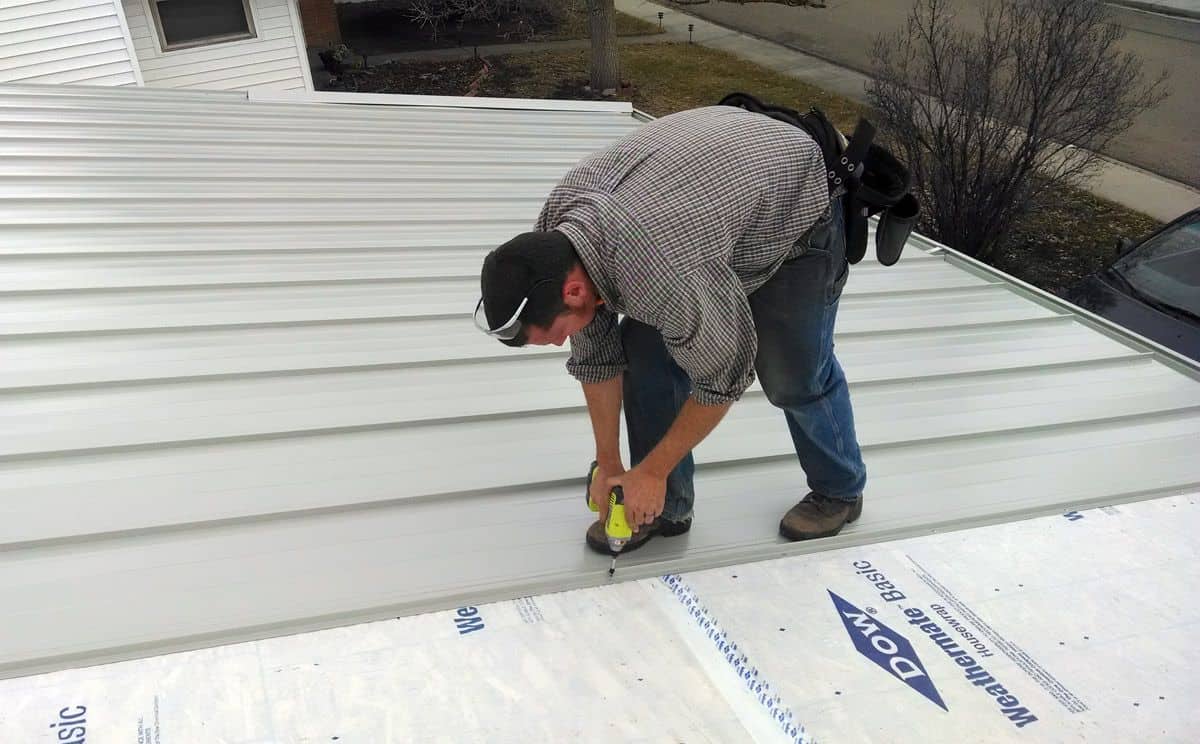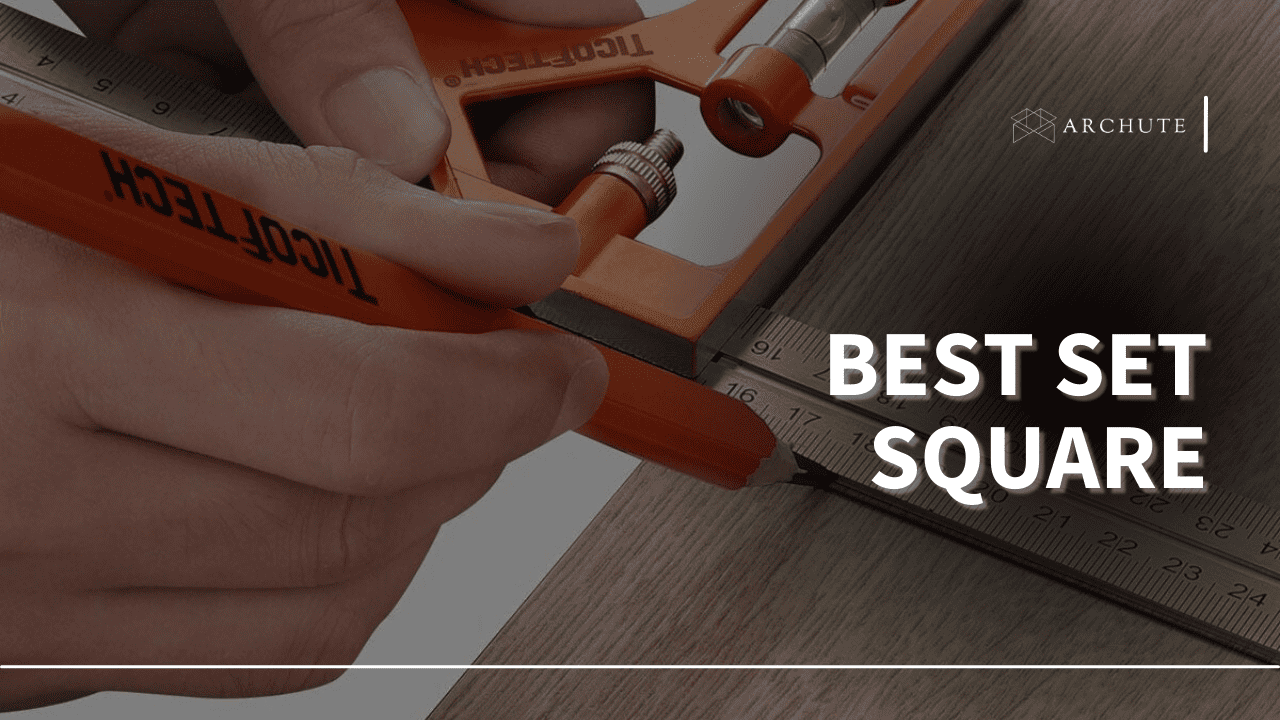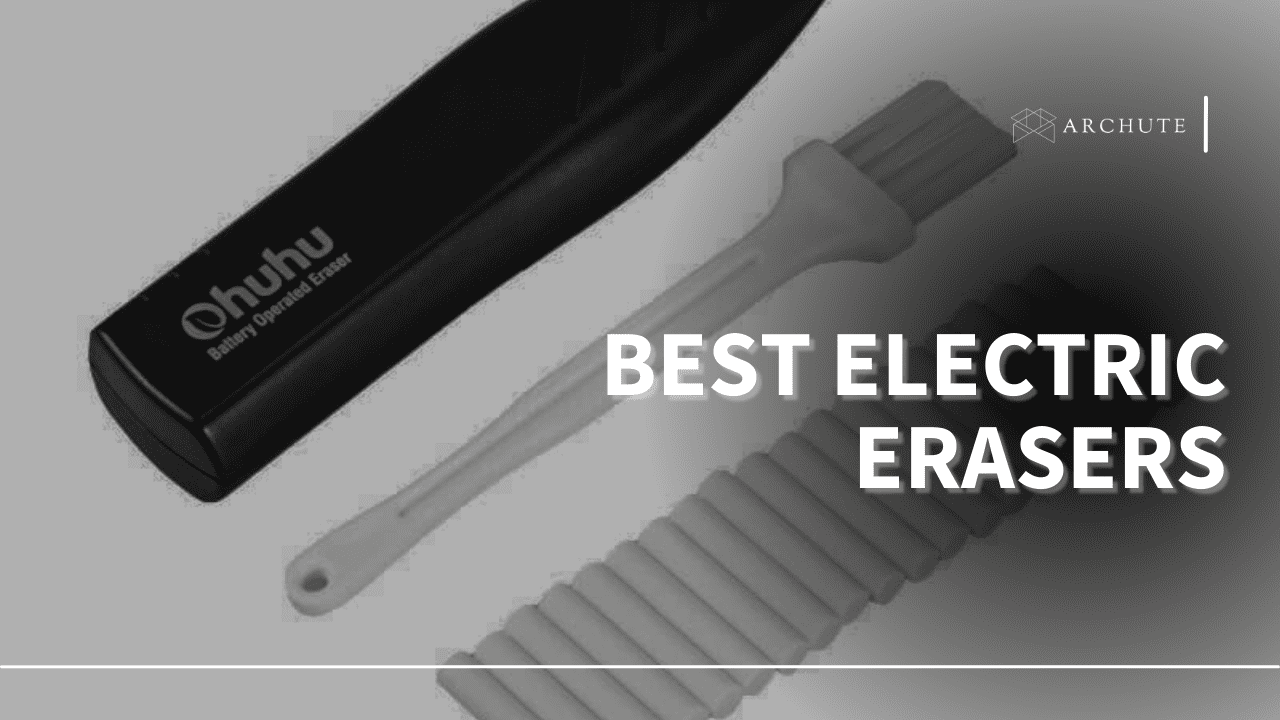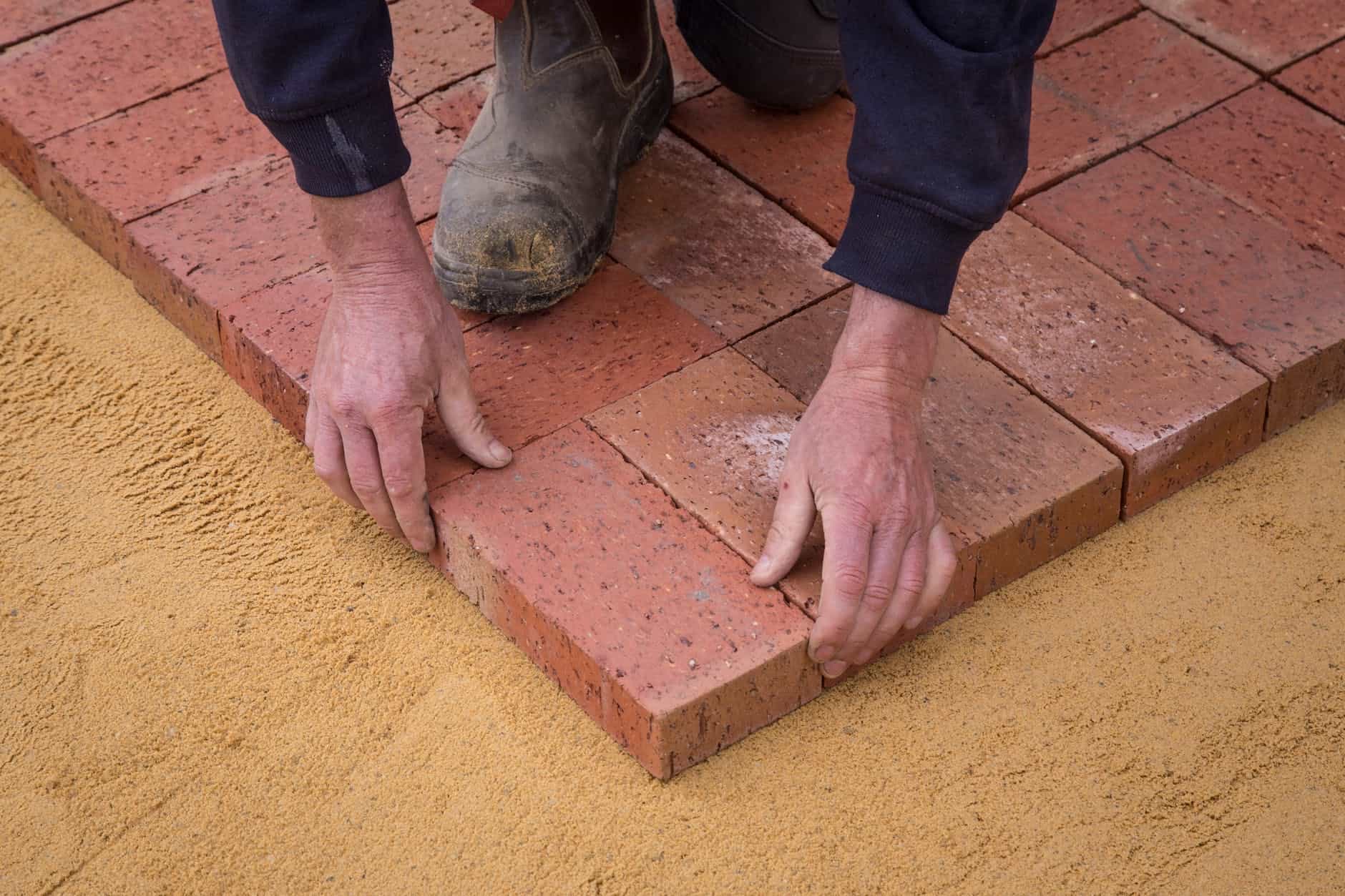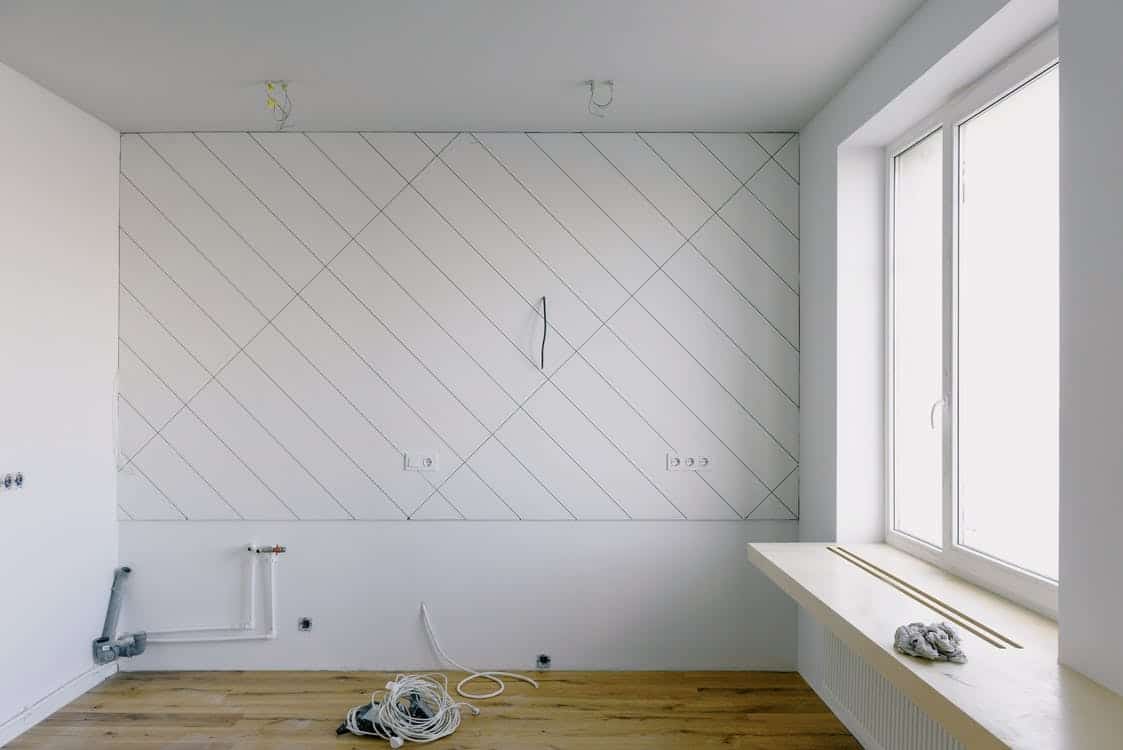If you anticipate that the elements may strain your roof, an underlayment is crucial. It would be best to have an underlayment you can rely on whether you have a lot of rain, snow, or extreme heat.
Felt is outdated, and rubber synthetics are more expensive to install since they take longer. However, synthetic brands are ideal if you want to complete your installation quickly without losing quality.
To save you time, we spent hours finding the best roof underlayment for asphalt shingles. We've provided you with a list of our top picks. Continue reading to find the best option for you.
What is Roof Underlayment?

Image Credits: Fine Home Building
A thin, water-resistant membrane called roofing underlayment is laid between the roof shingles and the roof deck to stop roof leaks. It is used for commercial and residential roofing, re-roofing, and maintenance projects.
Here are 5 things to consider when upgrading your old roof.
Selecting the best underlayment for roof shingles is important when re-shingling an old roof or installing a new one. There are several options when selecting the best underlayment for roof shingles.

Image Credits: Roof Giant
1. Asphalt-saturated Felt
This was the material of choice for roof underlayment before synthetic underlayment took over. It is frequently referred to as tar paper or felt paper and can be produced using different asphalt, polyester, cellulose, or bitumen combinations.

Image Credits: YouTube
2. Rubberized Asphalt
This option for roof underlayment is typically the most expensive due to the higher concentration of rubber polymers and asphalt. This mixture produces a completely waterproof seal, but it is very expensive.

Image Credits: Havelock Metal
3. Synthetic Underlayment
Synthetic underlayment became the primary underlayment material utilized today as the building materials sector underwent ongoing advancements. It is made from a base mat saturated with asphalt and strengthened with a mixture of fiberglass. It is also exceptionally water-resistant, considerably stronger, and more tear-resistant.
The Best Roof Underlayment for Asphalt Shingles
Rank | Product Image | Brand Name | Link |
|---|---|---|---|
1 | |||
2 | |||
3 | |||
4 | |||
5 |
1. ArmorLay 25 Synthetic Roof Underlayment 4' x 250'
- 10 square roll covers 1,000 square feet
- Meets performance characteristics ASTM D4869 and ASTM D226...
- 60 Day exposure to UV
- Slip resistant polymer applied to the bottom surface. Unique...
- Won’t buckle, warp, or crack , Water resistant
This is the best synthetic underlayment for asphalt shingles because it is light and provides coverage while weighing less than 25lbs with 1,000 square feet per roll. The installation is quite simple. It is suitable for asphalt-based composite roof shingles, steep slopes, and metal roof installations.

Image Credits: Amazon
It meets the performance requirements of ASTM D226 and D4869 standards. It withstands intense UV exposure for 60 days. You can walk on it thanks to the uniquely textured fabric that is slip-resistant.
Pros:
Cons:
2. DuPont Roof Protector Underlayment Roll 42" x 286'
- Lightweight for easy handling and installation with 90 day UV...
- Superior tear resistance compared to roofing felt for increased...
- Ideal for for sloped (>= 2:12) commercial and residential roofs...
I recommend DuPont Roof Protector because it is ideal for 2:12 sloped business and residential roofs and roofing applications for metal cladding or asphalt shingles. It can withstand the worst conditions because of its higher thermal stability that can handle a 90-day intense UV exposure.
Thanks to the four-layer design, it has great endurance and slip and tear resistance.

Image Credits: DIY Home Center
Each roll of DuPont Roof Protector has 10 squares, allowing for efficient installation and maximum roof coverage. This makes it simpler to install than roofing felt. In addition, there are fewer overlaps, seams, and fasteners, which aids in lowering labor costs and waste.
Pros:
Cons:
3. DuPont Tyvek Protec 120 Roof Underlayment 4' x 250'
- Compatible with roofs with asphalt shingles, cedar shingles and...
- Use for repair, re-roofing and new construction applications
- Trusted quality and durability from DuPont Tyvek
- The unique embossed pattern allows for better traction and grip...
DuPont Tyvek Protec 120 roof underlayment can be utilized underneath several roofing materials, such as asphalt shingles, cedar, or metal roof cladding, by builders and homeowners. It is best for slopes 2:12 or higher. It has a slip-resistant coating that holds it to the roof, woven polypropylene that gives it strength, and a water barrier layer.

Image Credits: Scene7
The grooves on the top layer expel water and dirt to create a safer working environment, while the four-layer design offers great performance. It is wrinkle-free, simple to install, and can endure UV exposure for up to three months.
Pros:
Cons:
4. Tyvek Protec 160 Roof Underlayment 4' x 250'
- Compatible with roofs with asphalt shingles, cedar shingles,...
- Use for repair, re-roofing and new construction applications
- Preserves the roof deck during installation and provides an...
- Trusted quality and durability from DuPont Tyvek, backed by a 40...
- The unique embossed pattern allows for better traction and grip...
DuPont Tyvek Protec 160 is a synthetic roofing underlayment with industry-leading walkability. It is known for its dependability and durability and offers a 40-year limited warranty. It is suitable with asphalt shingles, cedar, or metal roof cladding and is best for slopes 2:12 or higher.

Image Credits: YouTube
You can use it for new construction, re-roofing, and maintenance applications. Here are 14 signs that your property needs a roof replacement.
It is wrinkle-free, simple to apply, and acts as a moisture barrier to shield the roof deck during installation. The distinctive embossed design makes walking on the roof more secure and tractional. In addition, it can endure intense UV exposure for up to six months.
Pros:
Cons:
5. SIPA Synthetic Roof Underlayment 48" x 250'
- 10 square roll covers 1,000 square feet, 100GSM
- Performance characteristics exceed - ASTM D4869, ASTM D226, TDI...
- Ultraviolet Exposure for 60 days.
- Ideal for for sloped Commercial and residential roofs and roofing...
- Won’t buckle, warp, or crack , Water resistant
I recommend SIPA because it is a lightweight synthetic roofing underlayment that extends the life of a roof system by providing better water resistance and UV protection. In addition, this 100 GSM has enhanced traction thanks to the special non-woven top surface fabric.

Image Credits: Ubuy
It has a coil layer that is waterproof, anti-aging, and meets ASTM D4869 and ASTM D226 standards. It is also firm and reliable with no warped edge and empty drum.
Pros:
Cons:
Importance of Roofing Underlayment

Image Credits: Portland Quality Roofing
1. Weather Protection
The first line of defense is your roof's shingles, which are made to endure wind, deflect UV light, and stop water infiltration. However, because they overlap, strong winds easily lift shingles, leaving them open to blowing off and water intrusion.
Imagine that a severe weather event causes your shingles to come loose. The underlayment will prevent snow, ice, and rain from penetrating the roof deck and entering your home. In addition, the underlayment offers the required weather protection until the shingles are fixed or replaced.

Image Credits: Construction Mentor
2. Protection from Ice and Water Damage
Your roof may experience stress from ice or snow blockages. The water can seep in and cause leaks, water damage, and mildew If there are any gaps in the ceiling from melting snow or ice. The water-resistant underlayment will ensure that the water drains off the roof by sealing around the frame.
3. Fire Safety
The Class A fire rating cannot be met by shingles alone. However, your roof can achieve a Class A fire rating by using roofing underlayment that complies with building requirements, is compatible with the shingles above it, and has been approved by industry-standard compliances.
How to Pick the Best Roof Underlayment

Image Credits: All Weather Exteriors
1. Local Weather Conditions
Choose the appropriate roofing underlayment variant based on the weather conditions. For example, if you reside in a humid environment, you must pick a waterproof product to stop water leaks.
You will need to purchase a roof underlayment that can reflect sunlight if you live in an area with excessive summer temperatures to keep the air inside your home cool.
2. Compatibility
Roof underlayment comes in felt, rubberized, and synthetic forms. Felt underlayment is usually comprised of organic materials but may also have fiberglass reinforcement for increased durability and strength.

Image Credits: YouTube
Felt underlayment is best for steeply sloping roofs since it can facilitate swift water discharge. They are also reasonably priced. However, it might deteriorate and lose its ability to absorb water effectively over time. It isn't a great option if you're looking for high-grade water resistance and longevity.
One distinguishing feature of rubberized underlayment is its elastic, flexible, and self-sealing. As a result, it is appropriate for environments with high temperatures and provides exceptional moisture penetration and weather resistance.
Synthetic underlayment is the best because it provides higher insulation and waterproofing. Additionally, it is more permeable, allowing moisture to escape while preventing water infiltration. It offers prolonged protection from wind, rain, and ice. It is more expensive but more durable and works with most types of roofs.

Image Credits: Cajun Home Improvements
3. Roofing Material
Choose the appropriate roofing underlayment based on your roof type. For example, you can choose felt underlayment for conventional roofing because it is lightweight.
Synthetic underlayment is ideal for a metal roof and high-temperature environments because it acts as an insulator and promotes the escape of surplus heat.
You can find the best types of roofing material for commercial buildings here.
4. Durability
Another important factor to consider is the roofing underlayment's strength. To ensure the product will last, look at the materials utilized in its construction.
Before purchasing a roof underlayment for asphalt shingles, consider quality materials, but avoid being distracted by discounts. To learn about a product's actual toughness, examine past customer reviews.

Image Credits: Paramount Roof
5. Cost
The cost of the roof underlayment might vary depending on its quality, style, size, and brand name. Choose the best roofing underlayment that is within your price range. Price and quality are directly correlated; the lower the price, the worse the quality.
6. Customer Feedback
It's important to steer clear of disappointment while purchasing online; testimonials are a fantastic method to achieve so. Consider the feedback left by past customers before making a choice.
Frequently Asked Questions(FAQs)

Image Credits: Eagle Roofing
1. How Much Underlayment Do Asphalt Shingles Need?
There is underlayment on every roof. Therefore, at least a single layer of underlayment should be applied to an asphalt shingle roof. However, for better defense, roofers may think about adding layers of underlayment, which is especially helpful on low-pitch roofs.
2. Is Roof Underlayment Waterproof?
Most roofing underlayments are waterproof and serve as a water-resistant barrier before the shingles. However, certain underlayment products on the market today are not designed to be waterproof. Check the product's characteristics before buying it if you're specifically looking for a waterproof roof underlayment.

Image Credits: Western States Metal Roofing
3. How Should Underlayment be Applied to a Roof?
You have the option of doing it yourself or hiring expert installers. However, the cost of the roof underlayment services may be a significant expense for you. Some manufacturers include the installation instructions for the product with the purchase. You can also get tutorials and instructions for this on the internet.
Here is why you should hire a contractor to install your home's metal roof.
4. Which is Better: Felt or Synthetic Underlayment?
Synthetic roof underlayment gives you a superior outcome compared to felt but costs more. It is typically thin, insulating, and water-resistant while allowing heat and humidity to escape from the surface keeping your space cool and dry.
5. How Long Can Roof Underlayment be Left Out in the Open?
The product's lifespan fluctuates because different types arrive with different attributes. For example, the synthetic roof underlayment can typically be left out in the open for six to twelve months, while the time frame for the felt underlayment is between three to six months.
Featured Image Credits: unugtp

